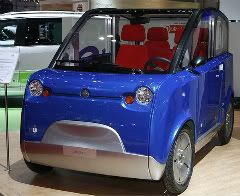A reader takes issue with my comment that, if driven a certain way, PHEV owners would experience “near infinite MPG,” referring to it as “dishonest and disingenuous.” He goes on, “Energy is still being consumed, that must be produced somewhere and has a cost. In all cases the energy should be taken into account. Perhaps we will need a new metric in future, but for the time being documents such as yours should talk about mpg-e, or miles per gallon-equivalent.”
There are two issues here. One is the actual MPG (in terms of gasoline) that drivers experience, and this itself is a hot topic. I’ve had numerous conversations with Tony Posawatz, the Vehicle Line Director for the Chevrolet Volt, about his frustrating dialog with the EPA over the difficulty of assigning a fair MPG number to the Volt.
This reader’s point, however, concerns the carbon associated with the electrical powerer being used. And of course he’s right that even a pure EV has a carbon footprint that includes the cost of generating the electricity. As I’m sure readers are aware, even with the dirtiest power generation technology (coal) with no modification to sequester the carbon, EVs still represent a significant boon to the environment. And, of course, as the migration to renewables progresses, this will only improve. This whole calculus makes it virtually impossible to identify an “MPG-e” with any real accuracy.
I can assure the reader that I had no intention of being dishonest, btw. “Wow,” as my teenage daughter would say, as she rolled her pretty green eyes.
But let us not forget, as I’ve written elsewhere, we could charge 90 million EVs this very evening with off-peak power that would otherwise be dumped back to ground. And we’re a very, very long way from having 90 million EVs on our roads.



 Again, I urge readers to check out the comments on the
Again, I urge readers to check out the comments on the